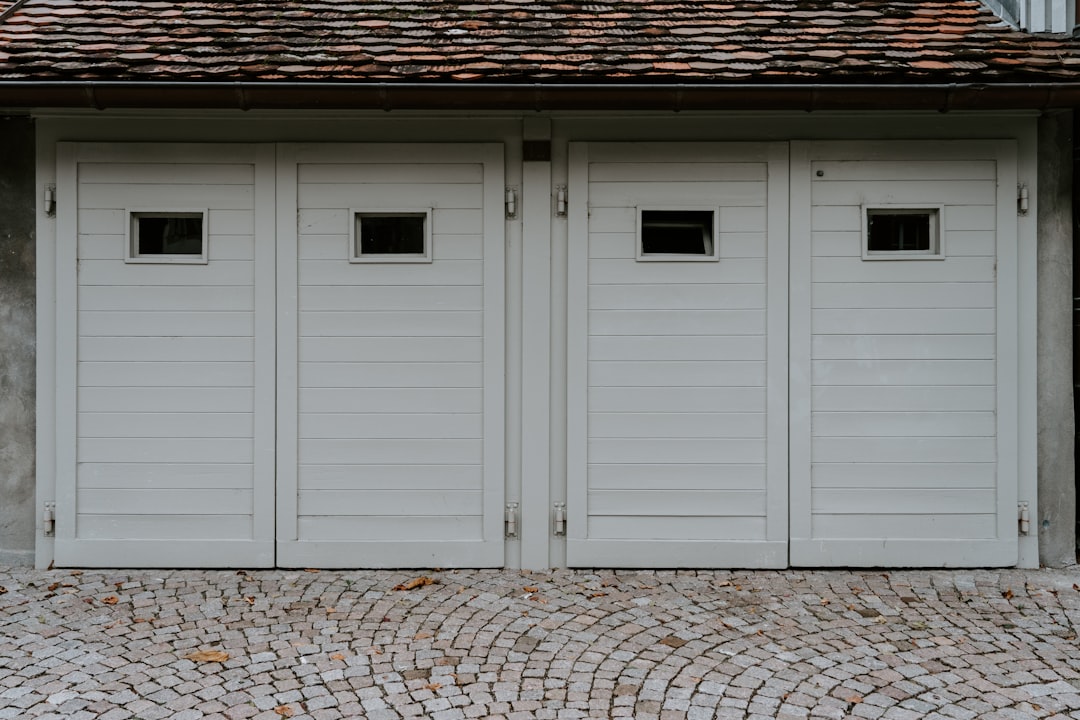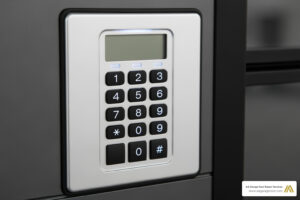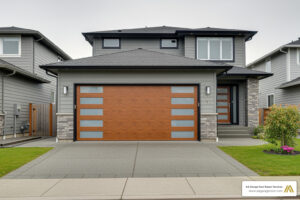Why Your Garage Door is So Noisy
That grinding screech every morning isn’t just annoying—it’s your garage door crying out for help. As trusted garage door experts, we know a noisy garage door fix often involves a simple solution because your door operates over 1,500 times a year, making wear and tear inevitable. Ignoring these sounds can lead to bigger, more expensive problems. Fortunately, many noise issues can be fixed in under an hour with basic tools.
Quick Fix Checklist:
- Lubricate moving parts: Apply silicone spray to hinges, rollers, and springs every 6 months.
- Tighten loose hardware: Check all nuts, bolts, and brackets with a socket wrench.
- Replace worn rollers: Upgrade to quieter nylon rollers with sealed bearings.
- Clean tracks: Remove debris and check alignment with a level.
- Call a professional: For spring issues or persistent noise after DIY attempts.
For complex issues like broken springs or for problems that persist after your DIY attempts, professional help ensures both safety and long-term performance. Understanding what different noises mean is the first step toward restoring peace and quiet. As the owner of AA Garage Door LLC with over 23 years of experience, I’ve seen how the right approach can transform a disruptive racket into whisper-quiet operation.
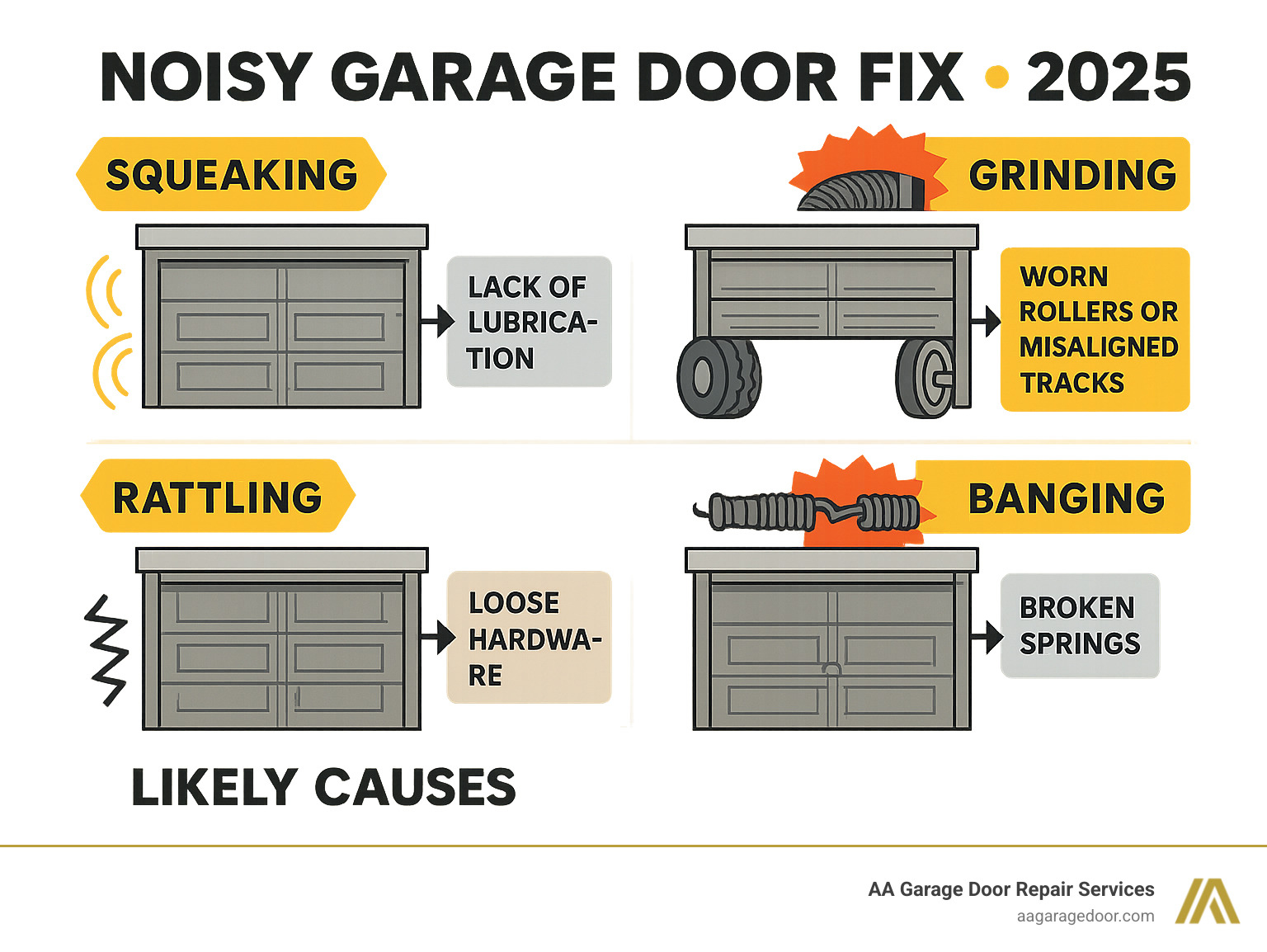
Decoding the Racket: What is Your Garage Door Trying to Tell You?
Your garage door communicates with squeaks, grinds, and bangs. Learning to decode these sounds helps you identify what needs attention for an effective noisy garage door fix.
Squeaking or Screeching Noises
That high-pitched screech usually means your door is “thirsty” for lubrication. Squeaking indicates metal-on-metal contact where parts should glide smoothly. The lubricant applied during installation dries out over time, causing friction.
The main culprits are your rollers, especially older metal ones, and hinges. When dirty, worn, or dry, they’ll protest with every movement. Even your springs can contribute to the noise when they need lubrication. This is often the easiest noisy garage door fix. For more tips, see our guide on garage door maintenance.
Grinding or Rubbing Sounds
A grinding sound suggests components are struggling to move correctly. This harsh, scraping noise means something is out of its intended path.
- Worn rollers are a common cause. Instead of rolling, they drag, creating a grinding noise.
- Debris in tracks, like small stones or dirt, can cause rollers to grind as they pass over obstacles.
- Misaligned tracks are more serious. If tracks are bent or loose, rollers or door panels can rub against them.
- Worn opener gears can also cause grinding as they struggle to lift the door.
A visual inspection can often reveal debris or misalignment. Don’t ignore grinding, as it can cause further damage. Learn more about proper track function on our garage door tracks page.
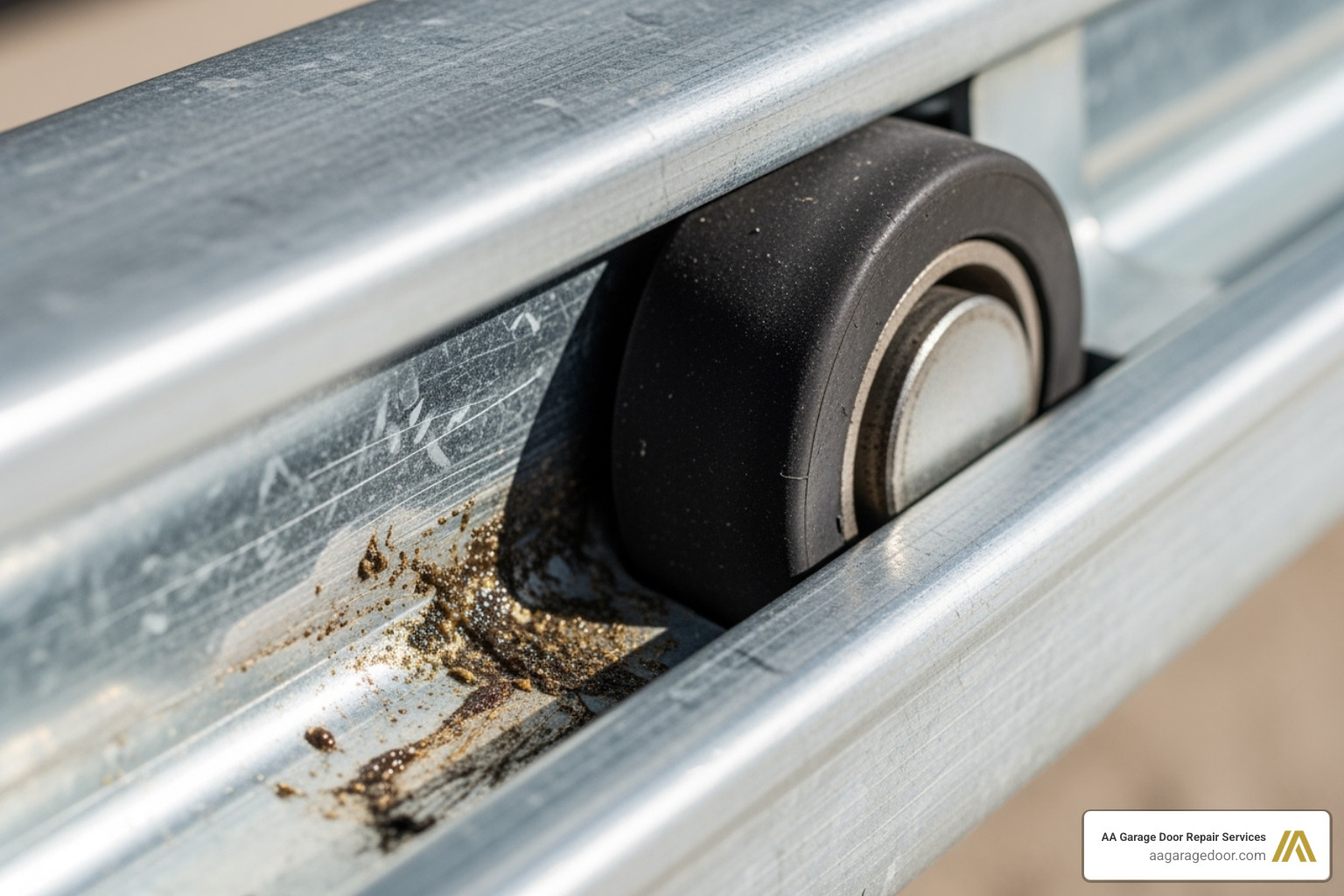
Rattling or Vibrating Noises
If your door sounds like it’s shaking apart, you’re likely dealing with loose hardware. This is usually an easy fix.
Nuts, bolts, and screws loosen over time from vibration. Check hinge screws, track bracket bolts, and opener mounting bolts. For chain-drive openers, a loose opener chain can slap against the rail, causing rattling. Sometimes, uninsulated door panels vibrate more, which is a characteristic of the door type rather than a problem to fix.
A tightening session with a socket wrench often resolves rattling. This resource on How to Fix a Noisy Garage Door offers excellent step-by-step guidance.
Banging, Popping, or Clunking Sounds
These abrupt sounds often signal serious issues that need immediate attention.
An unbalanced door can cause jerky movements and loud clunks, straining the opener. Worn extension springs can lose tension, causing uneven operation and banging. The most serious issue is a broken torsion spring, which typically creates a single, extremely loud bang, like a gunshot. If your door won’t lift manually after a loud bang, a broken spring is the likely cause.
A single, loud bang is a major warning sign that requires immediate professional attention. Do not attempt to operate the door or repair it yourself due to the extreme danger. Learn more about these critical components on our garage door springs page.
Your Step-by-Step Noisy Garage Door Fix: DIY Solutions
Now that you can decode your door’s distress signals, it’s time for a hands-on fix. Most noisy garage door fix scenarios can be tackled with basic tools, giving your door a much-needed tune-up for quieter operation.
Step 1: Tighten All Hardware
Loose hardware is a primary cause of rattling. Constant vibration loosens every nut and bolt over time. Start by unplugging your garage door opener for safety. With a socket wrench, systematically check and tighten fasteners from the bottom of the door up.
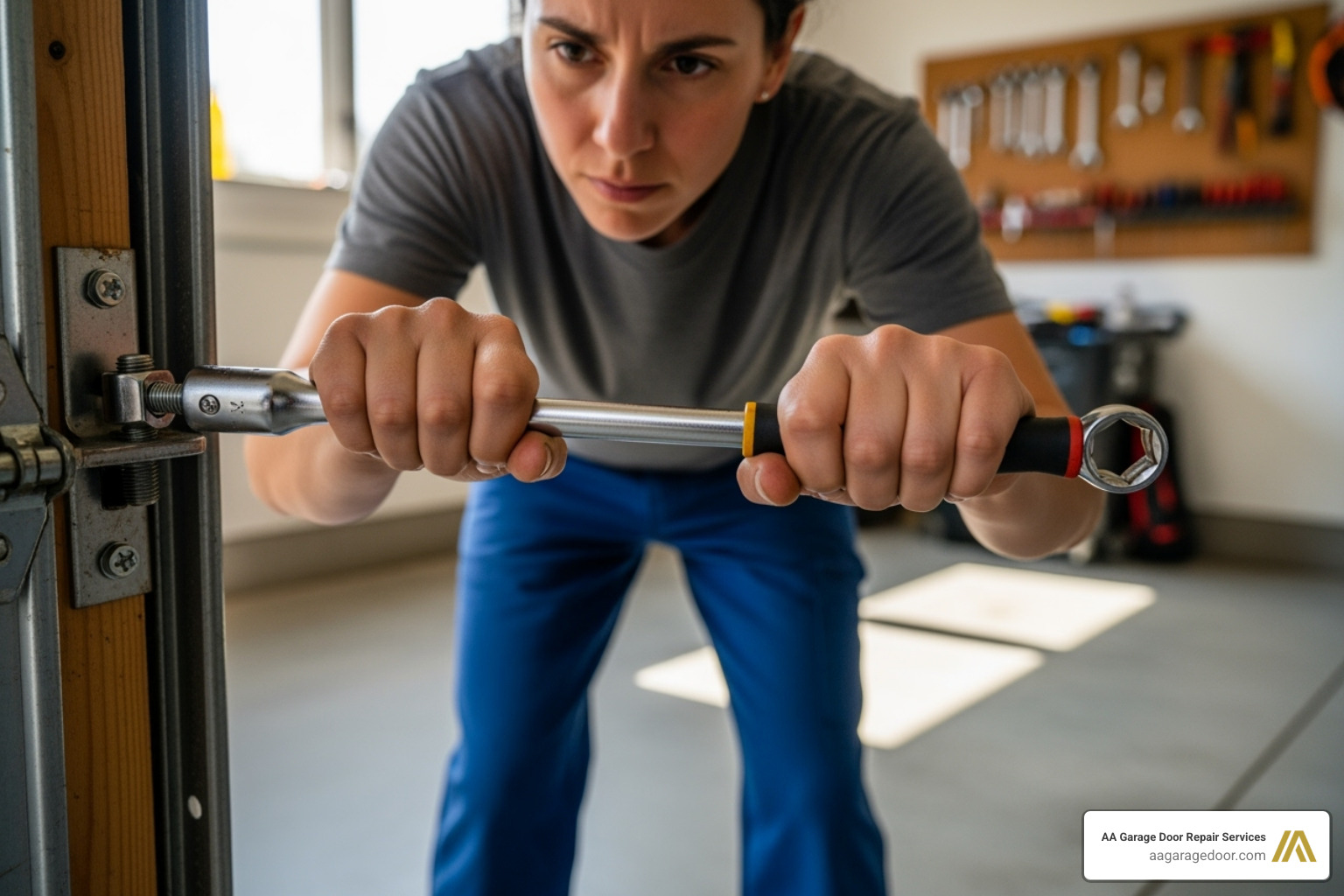
Key areas to check: hinge screws, track bracket bolts, and opener mounting bolts. Aim for a snug fit—think “firm handshake,” not “crushing grip”—to avoid stripping threads or warping panels.
Step 2: The Best Lubricant for Your Noisy Garage Door Fix
Proper lubrication is crucial, but using the wrong product can make things worse. Avoid WD-40; it’s a solvent that attracts dirt and will eventually leave parts drier than before.
Instead, use a silicone-based spray for hinges, roller bearings, and springs. For chain-drive openers, white lithium grease is ideal for the chain. Before applying, wipe down all parts with a clean cloth to remove grime. Target the pivot points of hinges, roller shafts and bearings (but not the roller treads), and spring coils. After lubricating, run the door a few times to distribute the lubricant evenly. Repeat this every six months. For comprehensive care, our professional garage door services can keep your system running smoothly.
Step 3: Inspect and Replace Worn Rollers
Your rollers are like the wheels on a car; when they’re worn, the ride gets rough and noisy. Look for wobbling, flat spots, or cracked nylon. Upgrading from old metal rollers to nylon rollers with sealed ball bearings is one of the best investments for noise reduction.
| Feature | Metal Rollers | Nylon Rollers (with sealed bearings) |
|---|---|---|
| Noise | Noisy, prone to grinding and squeaking | Much quieter, smooth operation |
| Maintenance | Require periodic lubrication, can attract dirt | Less maintenance, sealed bearings don’t need oiling |
| Durability | Can rust, wear quickly, develop flat spots | More durable, resistant to rust and wear |
| Cost | Less expensive | More expensive |
Replacing top and middle rollers is a straightforward DIY task. However, never attempt to replace bottom rollers yourself if your door has torsion springs. The bottom brackets are under extreme tension and can cause serious injury.
Step 4: Check and Adjust the Tracks
Your tracks must be perfectly aligned for smooth operation. Bent, misaligned, or dirty tracks can cause grinding noises. Start by cleaning the inside of the tracks with a dry brush. Never lubricate the tracks, as this can cause rollers to slip.
Use a spirit level to ensure vertical tracks are plumb and horizontal tracks are level. The distance between the two vertical tracks should be consistent. For minor bends, a gentle tap with a rubber mallet can work. To fix misalignment, loosen the bracket bolts, adjust the track position, and retighten. If you find severe damage or feel uncomfortable, call a professional. For more advanced tips, see our guide on pro maintenance tips.
Quieting the Core: The Garage Door Opener
Sometimes, the noise culprit isn’t the door but the opener itself. The motor unit hanging from your ceiling plays a huge role in noise levels, and most residential doors use chain drive systems—the loudest type available.
Advanced Noisy Garage Door Fix: The Opener System
Understanding your opener type is key to any noisy garage door fix.
- Chain drive openers are reliable and affordable but loud. The metal chain clanking along a metal rail creates significant noise. The chain can also stretch over time, causing it to slap against the rail.
- Belt drive openers are much quieter. They use a steel-reinforced rubber belt that glides smoothly, making them ideal if you have living space above or next to your garage.
- Screw drive openers fall in the middle, using a threaded steel rod. They are quieter than chain drives but not as quiet as belt drives.
Beyond the drive type, vibration is a major troublemaker. The opener can transmit vibrations through its mounting brackets into your home’s structure. For chain drive systems, a loose chain also creates a distinctive slapping and rattling sound. While chains can be adjusted, if the opener is struggling, it may be time for professional garage door opener repair.
How to Muffle Opener Vibrations
You can dramatically reduce transmitted noise by installing anti-vibration pads. These rubber cushions act as shock absorbers between the opener’s mounting brackets and the ceiling joists.
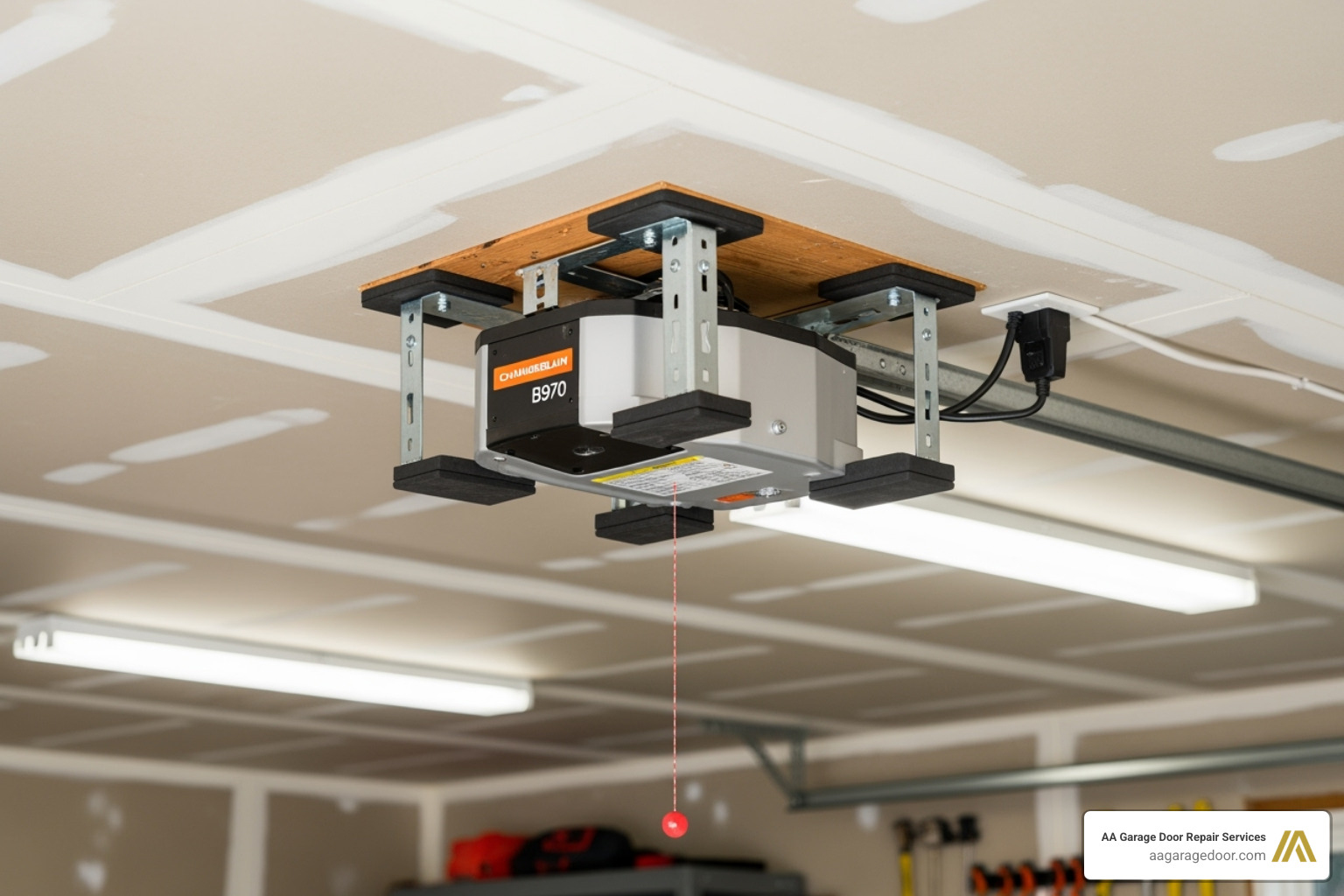
To install them, first unplug the opener and support its weight with a stepladder. Loosen the bolts attaching the mounting brackets to the ceiling, slide the rubber pads into place, and retighten the bolts. They should be secure but not so tight that they completely compress the pads. This simple fix can deliver surprisingly dramatic results. For a visual guide, check out this article on How To Muffle a Noisy Garage-Door Opener.
When to Call a Professional: The Dangers of DIY
While many noisy garage door fix solutions are safe for homeowners, some problems signal extreme danger. Garage doors can weigh 200-400 pounds, and when the systems controlling that weight fail, the situation can become hazardous quickly.
High-Tension Springs and Cables
Garage door springs and cables are under immense tension, storing enough energy to lift hundreds of pounds. A failure can release this energy with devastating force.
- Torsion springs, the large coils above the door, store tremendous energy. A break is explosive, often sounding like a gunshot, and can turn metal parts into projectiles.
- Extension springs, which run along the side tracks, can snap without warning, whipping around with bone-breaking force.
- Frayed cables are also under constant tension. If you see any fraying or corrosion, do not touch them. A snapping cable becomes a steel whip.
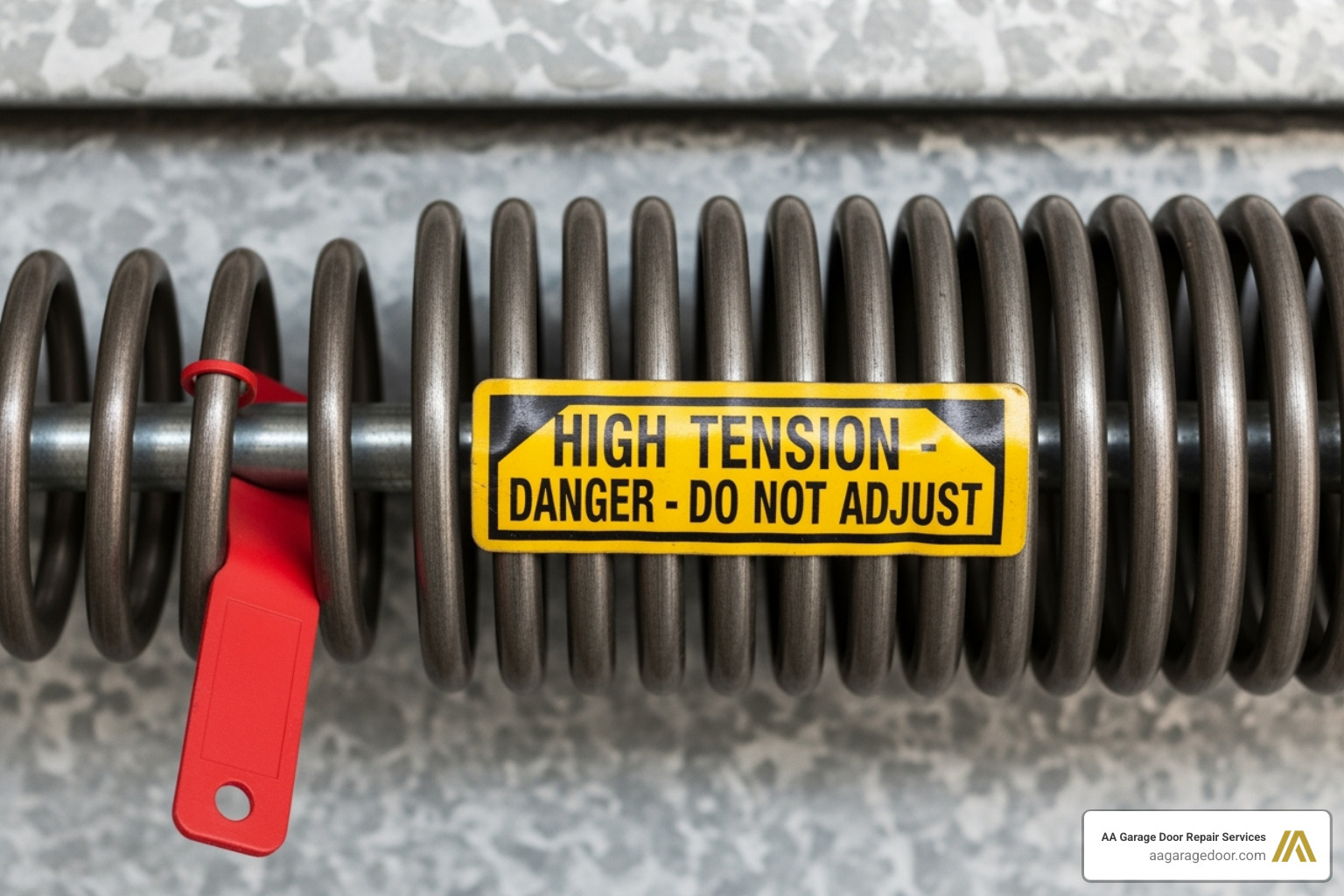
Professional technicians have the specialized tools and training to handle these components safely. For more on this topic, read about 3 Reasons to Have Damaged Garage Door Springs Professionally Replaced.
Unbalanced or Heavy Door
An unbalanced door is a safety hazard. It puts enormous strain on the opener motor. You can perform a simple door balance test: disengage the opener by pulling the emergency release cord. Carefully lift the door manually to about halfway up. A balanced door should stay in place. If it falls or feels extremely heavy, the springs are failing. Do not continue to operate an unbalanced door, as this can burn out the opener motor.
Persistent Noise After DIY Fixes
If you’ve tightened, lubricated, and cleaned everything, but the noise continues, it’s time for professional diagnostics. The issue could be a hidden problem, like a worn motor, a warped door panel, or failing internal opener components. Professionals have the tools and experience to identify the root cause of stubborn noises, saving you time, frustration, and potentially dangerous guesswork.
Frequently Asked Questions about Fixing a Noisy Garage Door
Here are answers to the most common questions about a noisy garage door fix.
What is the best lubricant for a garage door?
The best lubricants are silicone-based sprays or white lithium grease designed for garage doors. Silicone is great for hinges, rollers, and springs, as it dries to a clean film that doesn’t attract dust. White lithium grease is ideal for opener chains. Avoid WD-40; it’s a solvent, not a long-term lubricant, and will ultimately make the noise worse by attracting dirt.
How often should I perform maintenance to keep my door quiet?
Perform a basic maintenance routine every six months. This should include lubricating all moving parts and tightening any loose hardware. Given that a garage door operates over 1,500 times a year, this regular care prevents bigger problems. We also recommend a professional inspection annually to catch subtle issues like spring wear or minor track misalignment before they become major failures.
Can I just replace my old metal rollers with quieter nylon ones?
Absolutely. Upgrading from old metal rollers to nylon rollers with sealed ball bearings is one of the most effective ways to quiet a noisy door. Nylon is inherently quieter, and the sealed bearings require no future oiling. While replacing the top and middle rollers is a safe DIY project, do not attempt to replace the bottom rollers. The brackets holding them are under extreme spring tension and can cause serious injury if mishandled. Always call a professional for this task.
Conclusion: Enjoy the Sound of Silence
A quiet garage door is more than a convenience; it’s a sign of a well-maintained and safe system. By taking the time to lubricate moving parts, tighten loose hardware, and inspect for worn components, you’re not just performing a noisy garage door fix—you’re extending the life of your entire system.
Many noise issues are simple to solve. Squeaky hinges, rattling bolts, or worn rollers can often be fixed in under an hour with basic tools. There’s real satisfaction in diagnosing the problem and restoring peace to your home.
However, knowing when to call a professional is crucial. Issues involving high-tension springs, frayed cables, or persistent noise after DIY attempts require expert knowledge. Your safety is always the top priority.
At AA Garage Door Repair Services, we’ve been the trusted name for garage door repair throughout the Twin Cities since 2001. When you need backup for a broken spring, a complex opener issue, or a noise that just won’t quit, we’re here with fast, reliable service and transparent pricing. Our local expertise means we’ve seen every challenge across areas like St. Paul, Minneapolis, and Western Wisconsin. If your DIY fix hasn’t brought the silence you’re hoping for, don’t hesitate to contact us for a quiet and smooth-running door.

